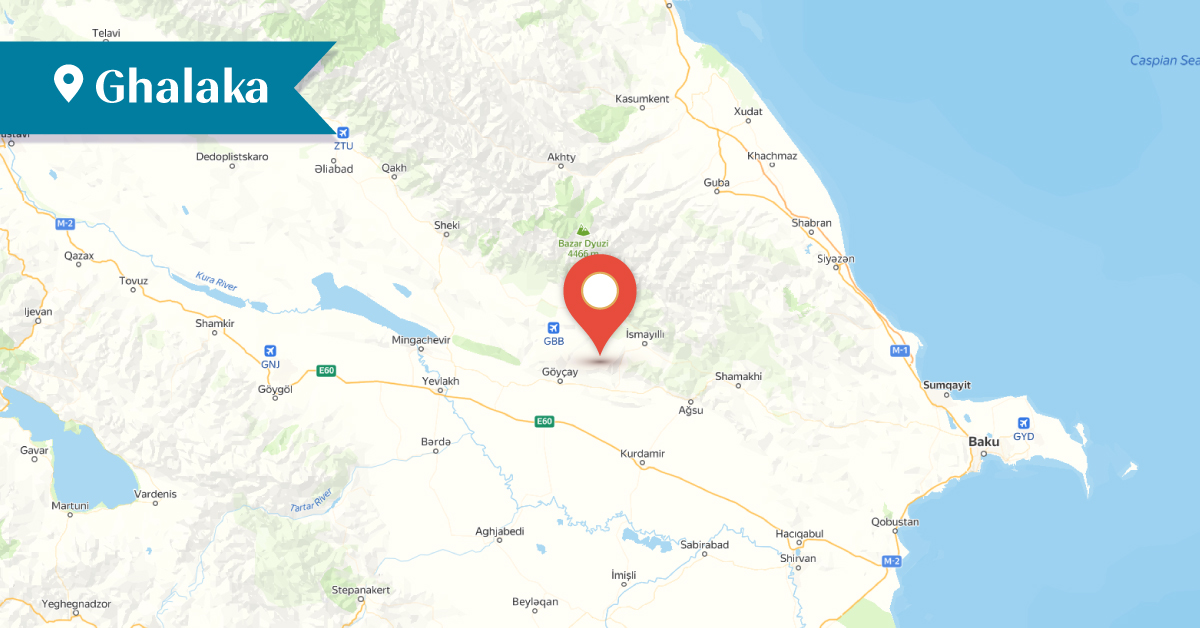2025
2025
2025-07-07

The village of Ghalaka in the Ismayilli district is located 19.5 km southwest of the district center. Ghalaka was one of the most populous villages in the Gardman district of Shamakhi. The ancestors of its inhabitants had migrated from Dashbulagh, Ghishlagh, Arajadzor, Khantsk, and Khndzristan of Khachen, as well as from the villages of Hghorti and Nakhijevanik.
In 1861, there were 111 Armenian households in Ghalaka, and by 1865, the number had increased to 170. During the visit of Bishop Makar Barkhudaryants in 1890, the village had 298 households with a population of 1,593 Armenians. In 1914, Ghalaka was entirely Armenian-populated, with 2,466 residents.
In the summer of 1918, the village was attacked by Turkish troops; however, the residents of Ghalaka organized a one-day self-defense. After an unequal battle, the Turks invaded the village. The population fled and found refuge in neighboring villages. Around 60 people from Ghalaka were killed or wounded.
During the Soviet era, a memorial was erected in honor of the fallen villagers of Ghalaka, bearing the following inscription:
“Brothers’ cemetry of the victims of the Civil War of 1918–19.”
After the establishment of Soviet rule in Azerbaijan, the residents of Ghalaka who had survived the massacres returned to their native village. In 1924, Ghalaka was home to 180 Armenian households with 715 residents.
During the Soviet era, a Russian-language secondary school operated in the village. In 1984, it had 135 Armenian and 40 Lezgi students.
In that same year, Ghalaka had 121 Armenian households with a population of 460. The village’s Armenian population was forcibly displaced at the end of 1988.
In the old quarter of Ghalaka, during the visit of monument specialist Samvel Karapetyan in 1984, the Church of the Holy Mother of God (Surb Astvatsatsin) was still standing. It was originally roofed with wood and later thoroughly renovated through the efforts of the villagers. According to the church’s construction inscription
This temple was built through the donations and efforts
of the Armenian community of the village of Ghalaka,
and through the internal and external
labor of Mikayel Tsaturyan. 1867.
On the southern wall of the Church of the Holy Mother of God, a donation inscription was carved:
“May the Lord have mercy on the soul
of Grigor Bardanyants from Ghalaka,
who donated 300 rubles for the construction of the
Church of the Holy Mother of God and for the vestments
During the Soviet era, the church was used as a grain storage. Azerbaijani vandals blew up the Holy Mother of God Church in 2003, and now it is ruined.
In the old cemetery of Ghalaka village, during Samvel Karapetyan’s visit, more than 2,000 tombstones dating from the 15th to the 20th centuries were preserved, of which about 400 bore inscriptions. On one of the tombstones from 1701, a spear, a bow, and a cross were carved. The oldest of these tombstones dated back to the 15th–16th centuries.
The inscription on one of the tombstones reads:
“Here rests Ter Gabrielean Ter-Gaspareants from Balasa,
who passed away on August 11, 1892, at the age of 38.
May this silent tomb serve as a vivid example to you,
that worldly fame is vain and empty,
and only good deeds and a good name endure through the ages.”
The tombstone of the priest Ter Nerses Ter-Gasparyants of Ghalaka village also was preserved, bearing the following inscription:
“Here rests the priest Father Nerses
Ter-Gasparyants, who passed away in 1899 at the age of 57.
Holy Father, you have died,
but you left an immortal memory of yourself.
By your deeds, you became a good example,
and you became a martyr for the holy cause.”
During Samvel Karapetyan’s visit, the Shinategh, Keov, and Jmana Khut sites were preserved within the village territory. The village is now called Galagah (Azerbaijani: Qalagah) and is inhabited by Azerbaijanis and Lezgins.
Bibliography
Barkhutaryants M., Land of Aghvank and its Neighbors: Artsakh, Yerevan, 1999.
Karapetyan S., The Armenian Lapidary Inscriptions of Aghvank Proper, Yerevan, 1997.
Karapetyan, S., Aghvank Proper, Part 1, Yerevan, 2024, pp. 147-165.